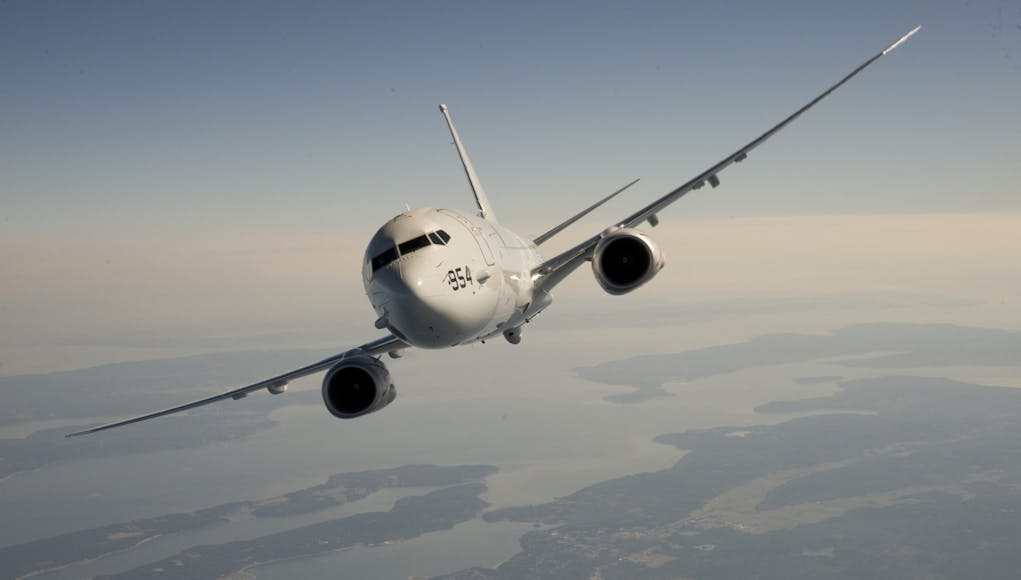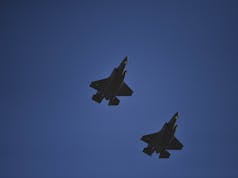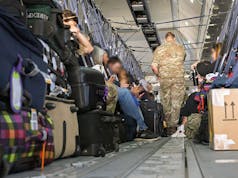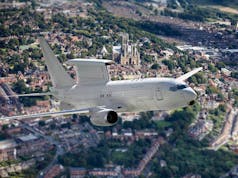The P-8 Poseidon is an aircraft designed for long-range anti-submarine warfare; anti-surface warfare; and intelligence, surveillance and reconnaissance missions.
It is capable of broad-area maritime and littoral operations. It is a derivative of the Next-Generation 737-800.
The following excerpt comes from this notification.
“The State Department has made a determination approving a possible Foreign Military Sale to the United Kingdom for P-8A Aircraft and associated equipment, training, and support. The estimated cost is $3.2 billion. The Defense Security Cooperation Agency delivered the required certification notifying Congress of this possible sale on March 24, 2016.
The Government of the United Kingdom (UK) has requested notification for the possible procurement of up to nine (9) P-8A Patrol Aircraft, associated major defense equipment, associated training, and support. The estimated cost is $3.2 billion.
The UK is a close ally and an important partner on critical foreign policy and defense issues. The proposed sale will enhance U.S. foreign policy and national security objectives by enhancing the UK’s capabilities to provide national defense and contribute to NATO and coalition operations.
The proposed sale will allow the UK to re-establish its Maritime Surveillance Aircraft (MSA) capability that it divested when it cancelled the Nimrod MRA4 Maritime Patrol Aircraft (MPA) program. The United Kingdom has retained core skills in maritime patrol and reconnaissance following the retirement of the Nimrod aircraft through Personnel Exchange Programs (PEPs). The MSA has remained the United Kingdom’s highest priority unfunded requirement. The P-8A aircraft would fulfill this requirement. The UK will have no difficulty absorbing these aircraft into its armed forces.”
The UK P-8s are also to perform search-and-rescue missions and conduct overland reconnaissance.
Deliveries of the P-8’s are to begin before 2020. Whether the aircraft will carry UK weapons and sonobuoys has yet to be decided. It is also unclear whether the UK will have access to future ground-surveillance capabilities being developed for the P-8.














Not a bad price for such a highly capable MPA. Reckon we should go for another 5-6 P8As in a few years time= SDSR2020
Given the cost of procuring and supporting the MRA4, the P8 purchase looks a bargain.
This Government’s newly found enthusiasm for a modern Industrial Strategy has seen it go for off-the-shelf solution to satisfy its military equipment needs, in the shape of the Boeing P-8A Poseidon maritime patrol aircraft.
Whereas the Ministry of Defence will not come out and say so publicly, it is clear that MoD’s preference for looking at the off-the-shelf solution as its first and foremost option, when deciding on which military equipment to buy, has been the determining factor in its choice of the P-8A.
After being misled by UK-based defence equipment manufacturers with false promises and lies for several decades, this generation of elite politicians, senior civil servants, military top brass and front-line procurement officials have been so badly scarred that, there remains little appetite to consider any alternatives that may be put forward by these same dishonest suppliers.
Of course, MoD would favour an off-the-shelf equipment because it corresponds to a fully engineered and supported technical solution which satisfies the totality of the technical specification requirement, at no additional cost or risk to MoD, that is to say, it does not require any UK-specific modifications or related development work laden with risk to be performed upon it.
Accordingly, it is entirely understandable that MoD has opted to spend £3.2bn on this US-designed and manufactured product. It has done so for the following reasons:
(a) MoD will have had the benefit of evaluating the hardware configuration of the technical solution to assure itself that the standard P-8A satisfies the technical specification requirement set by the military customer, in particular the key user requirements, before placing an order.
(b) Acknowledging the fact that the cost of acquiring and re-provisioning Support Assets associated with military equipment over the whole life cycle can be in the order of four to five times the prime equipment costs, MoD will have sought and obtained firm selling prices, not only for the P-8A weapons platform itself, but also its Support Assets needed to sustain the fleet for the full period of its service life – enabling it to maintain a fixed, through-life budget without any risk of it being breached.
(c) MoD will have been able to verify that there exists a fully functioning production line for the P-8A, before taking the main investment decision.
(d) Commonality and interoperability with US armed forces, on any likely future operations brings with it the certainty that replacement spare parts for this platform will be made available, via a common logistics supply chain – thereby reducing in-service support costs considerably.
If anyone has any doubt about the determination of this Government to look at the off-the-shelf solution as its first option, then they should consider this irrefutable fact – that settling on the choice of the standard P-8A means that these aircraft cannot be refuelled in-flight, by RAF’s Voyager tanker planes to extend their range and endurance on-station, because the former are fitted with the flying-boom receptacle whereas the latter are equipped with the probe-and-drogue system, making them entirely incompatible. The Government has taken a lot of flak from informed commentators and endured negative publicity in the press and media for this serious operational shortcoming – nevertheless, it has decided to go ahead with the purchase.
All the indications are that the Government does not intend to fund a modification programme to install in-flight refuelling probes in place of the receptacles after the aircraft have been delivered to the UK, given that the P-8A seedcorn crew have been trained to refuel their own aircraft, even at civilian airports, using standard commercial aircraft refuelling equipment. The rationale behind this posture is that the Government is dead against undertaking any sort of modification work which entails the Treasury having to take on unknown risks and the usual, attendant spiralling costs that go with them.
The decision to go for the off-the-shelf solution is entirely justified because the P-8A is a mature and stable design standard devoid of any hidden financial, technical or schedule risks which have dogged the so-called, minimal development solutions proposed by UK-based defence equipment manufacturers.
Another beneficial side-effect to be derived from MoD shifting its attention onto the off-the-shelf buy is that those UK-based defence equipment manufacturers who are left high and dry by this subtle policy adjustment, most notably the Select Few, will have no choice but to increase their competitiveness substantially, by first selling their products in the international marketplace – on price, superior technical performance, timely delivery & without bribing public officials via intermediaries – and then re-entering the domestic market with renewed confidence and fully developed products rebranded as off-the-shelf offerings, just as the Americans have done!
@JagPatel3 on twitter
The contract includes a mess of other things apart from the aircraft so what mathematics was used to get the 250 million price tag?
sorry wrong place for reply but while I am here…
” … elite politicians, senior civil servants, military top brass..” Elite????
and
“..misled by UK-based defence equipment manufacturers with false promises and lies for several decades..”
Both stupid and patently false. I assume the commentator lives in the vicinity of the Kremlin.
Interesting and well thought out reply- thank you. It hadn’t occurred to me about the AAR issue. Everyday is a school day!
The lack of AAR is unfortunate, but its not a show stopper.
Great to see a capable piece of kit like the P8 with RAF roundels and I hope it fires a warning shot across BAE Systems bow.
The Anglo French UCAV demonstrators will likely turn into the next money pit, unless other players are brought in.
I would like to see the UK, France US and Japan collaborate on an operational system, ( capable of a wide range of tasks, including working with the P8) it needs to be built in sufficient numbers that reduce the acquisition cost to an acceptable level.
If only….
Maybe if they had persevered with the Nimrod it would have turned out cheaper over the long term. Skills that have now been lost which take a long time to regain.
No no no Nimrod is dead…long live Poseidon.